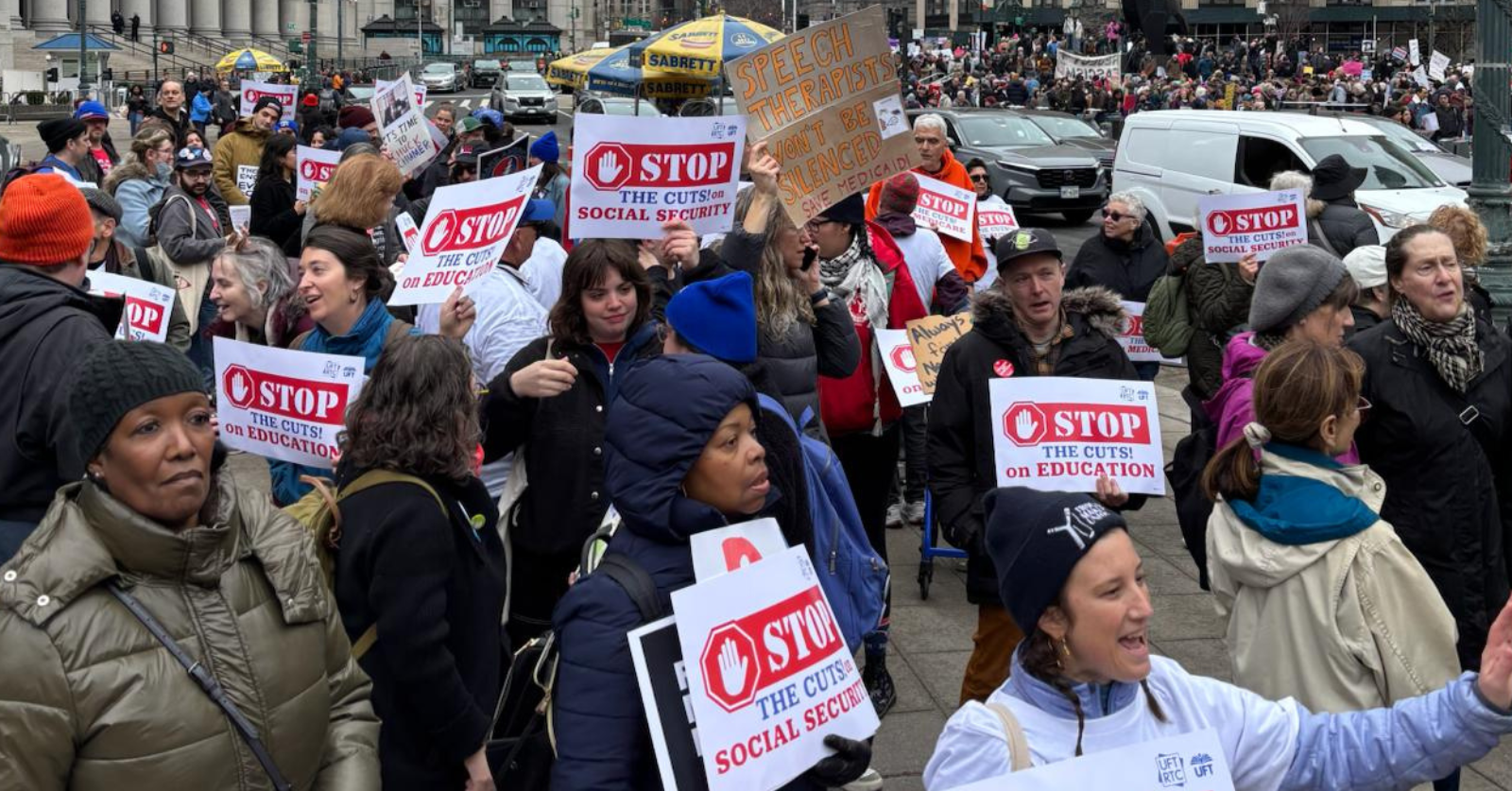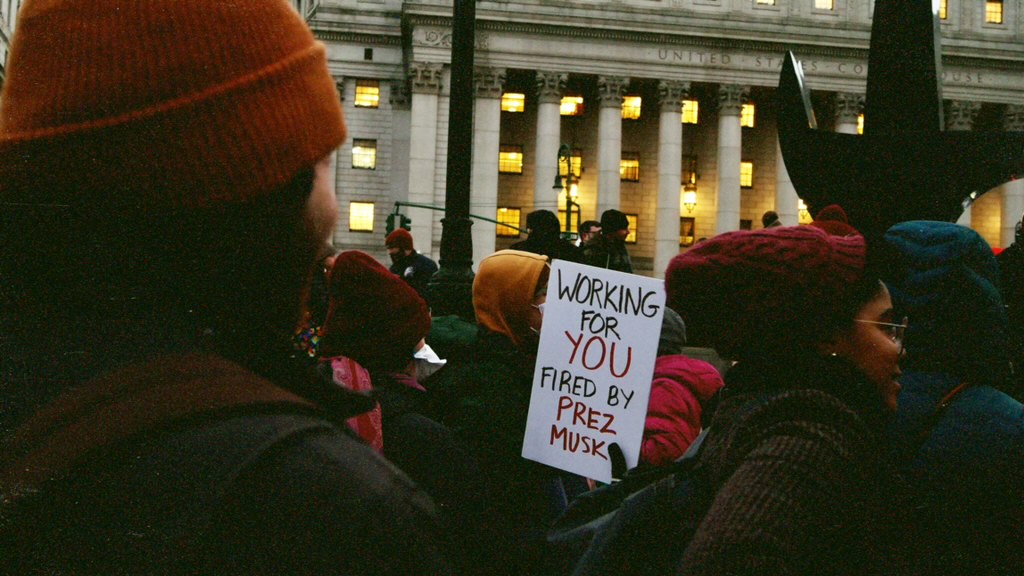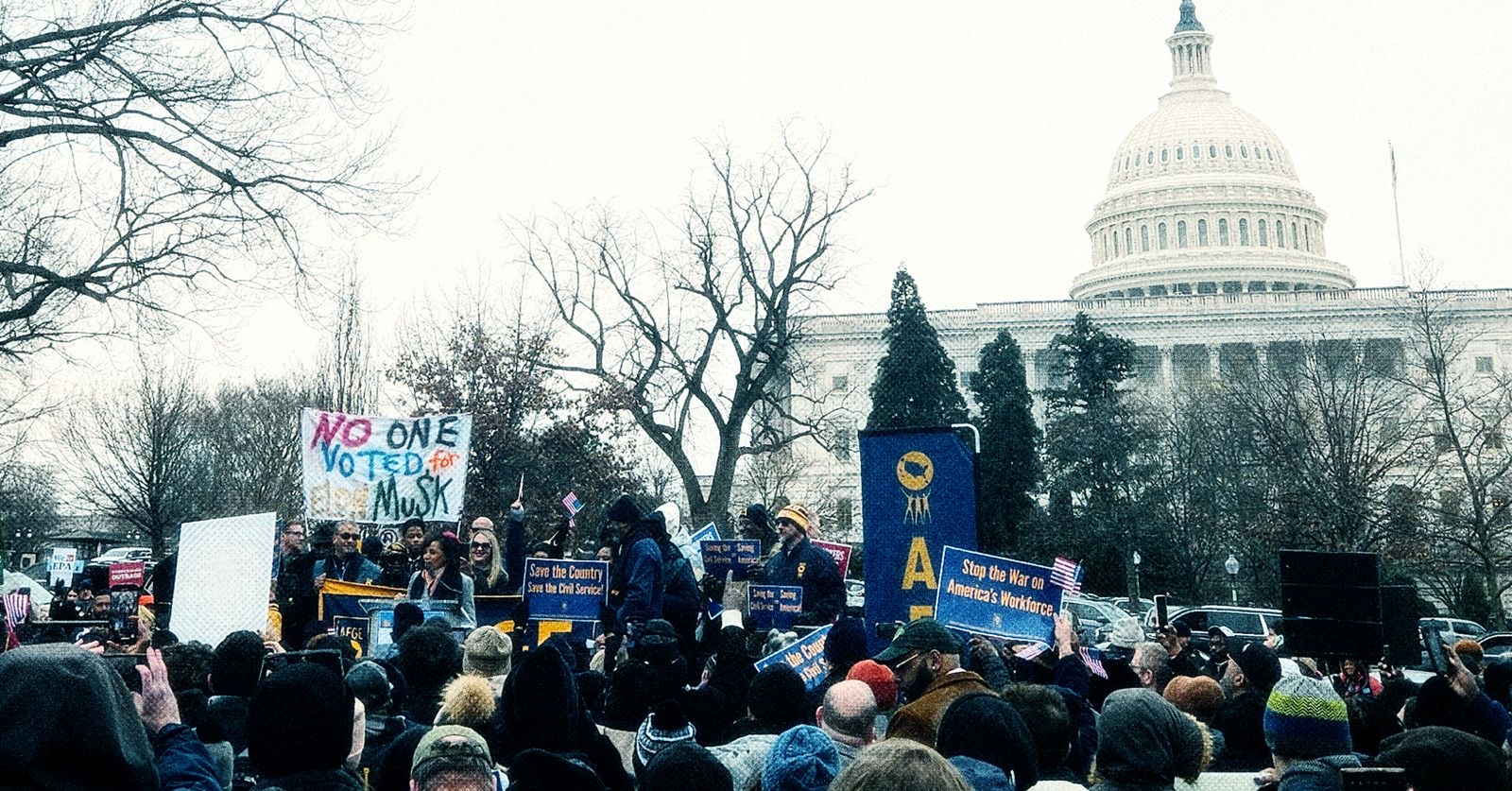DSA’s current top national priority is passing the Protecting the Right to Organize Act (PRO). Its changes are deeply needed and it’s encouraging how DSA has stepped up its labor game.
Without a clear plan for revitalizing the labor movement, though, all the hard work that DSA has put into passing the PRO Act won’t be enough. Labor law reform will mean little without unions that are able to put its advantages to use — unions that are ready to fight.
If passed, the Act would be the most pro-worker labor law reform since the National Labor Relations Act of 1935. The bill cleared the House March 9, but faces an uphill battle in the Senate. Three Democratic holdouts would need to switch their votes, which seems vanishingly likely, and the Senate Democratic leadership would need to find the fortitude to bypass the filibuster.
For an organization that has often viewed labor as one issue among many, it is important that DSA is placing labor at the center of its work. Particularly heartening is how DSA is framing our campaign as integrally tied to climate justice and the Green New Deal. Given that most DSA members are not union members, the PRO Act campaign offers a concrete way to learn about the labor movement and to plug into labor work. DSA members have dialed 800,000 phone calls to voters and played a role in flipping the votes of Senators Joe Manchin of West Virginia and Angus King of Maine.
As we keep these positives in mind, it’s important to think beyond the PRO Act campaign, both about what’s needed to rebuild labor’s power and about the role DSA can play.
If the PRO Act eventually passes it will be a major step forward, but labor revitalization will still have a long way to go. Labor law reform on its own can’t revitalize class struggle.
Canada’s Example
To get a sense of this, we can compare the situation in the U.S. with that of our neighbors in Canada. It’s an apt comparison, since the effect of the PRO Act would be to import Canadian labor law to the U.S.
There is plenty of research showing that Canadian labor laws better protect workers’ rights and make it easier to unionize than in the U.S. While it’s not the whole story, Canadian labor law is part of the reason that overall unionization rates there are nearly three times higher than in the U.S. (29.4 percent vs. 10.8 percent).
But it was class struggle that brought these changes about. First, Canadian labor law only evolved in a more pro-union direction in the aftermath of a massive strike wave in the 1960s and 70s that frightened employers and political elites. So rather than labor law reform leading to union growth, it was union growth through militant protest that led politicians to respond with labor law reform.
While strikes have been on the rise in recent years in the U.S., they have not reached anywhere near the level that might convince recalcitrant employers and politicians to give in on labor law reform.
Second, even with stronger laws, Canadian labor is hardly in great shape. If we dig beneath the top line numbers and focus on unionization in the private sector, the picture is clearer. It’s important to focus specifically on the private sector because that’s where the PRO Act would apply.
The private sector unionization rate in Canada stands at 14.3 percent. This is down from 19 percent in 1997, a 25 percent drop. It’s far better than in the U.S., where the private sector unionization rate is closer to 6 percent.
Without question, it would be great to see U.S. rates more than double. But as impressive as this would be, it is nowhere near the level needed to reassert workers’ economic and political power. If Canadian unions have only managed to stay at 14 percent unionization in the private sector with PRO Act-style labor laws in place but without a big uptick in struggle, could we reasonably expect U.S. unions to do much better?
Rebuilding Labor’s Muscle
As an organization committed to rebuilding a powerful, organized working class, DSA must have a more ambitious strategy. The question is how.
The central problem is that labor revitalization is not something that can be coaxed from without. It must be built from within. Better labor laws will help by outlawing many of the tools that employers and governments use to crush unions. But today’s unions are not militant, well-oiled fighting machines that would be organizing tens of millions of workers if only they weren’t hamstrung by restrictive labor laws.
Decades of sustained anti-union attacks have taken their toll, sapping labor’s fighting capacity. Unions themselves undermined that fighting capacity by expelling or sidelining left leaders and activists in the post-World War II period. Historically, they were the toughest, most dedicated organizers, and their absence left a void that is still felt today. In their place rose a layer of cautious, conservative, and sometimes corrupt union leaders who were far more interested in “partnering” with management than in fighting it.
The combination of employer assaults and cautious leadership has resulted in a labor movement that, with notable exceptions, has largely forgotten how to fight. While teachers and nurses led a sharp uptick in strikes in 2018 and 2019, overall strikes have declined drastically in the U.S. since the 1980s. (To be fair, strikes have declined in most industrialized countries, but the U.S. ranks near the bottom.) If, as the saying goes, strikes are labor’s muscle, that muscle has atrophied.
No labor law reform can rebuild labor’s muscle. That comes only through regular exercise.
But again, the question is how. And what role can DSA play?
We Must Embed DSA in Unions
Here we are confronted with a central problem that DSA faces: despite tremendous growth in recent years, we remain largely cut off from many sectors of the organized working class. So when opportunities for building worker organization and struggle arise, DSA is often on the outside looking in. We are more likely to be organizing strike support than leading strikes.
That is no knock on strike support, which is an essential part of what socialists should be doing. It is something that many DSA chapters have already been doing, with impressive results. But a key part of any long-term vision for rebuilding the labor movement must include repairing the severed link between labor and the left.
This is a historical challenge that has affected the U.S. left since the 1950s, not something particular to DSA. But it is still a problem that must be overcome.
DSA took steps by adopting the “rank-and-file strategy” at its 2019 convention. This marks a reorientation for DSA, which historically, before the Bernie surge, focused more on getting the ear of progressive union staffers and officials. Instead, the rank-and-file strategy seeks to reconnect labor and the left by working to rebuild a layer of militant workplace leaders — the day-to-day organizers who are essential for building fighting unions and class consciousness among workers.
So far, DSA chapters in Portland, Chicago, New York, East Bay, Los Angeles, Austin, and elsewhere have started implementing elements of the rank-and-file strategy. YDSA has made constructing its rank-and-file pipeline a top priority.
Compared with political campaigns, the timelines with rank-and-file organizing are much longer, so it’s too early to assess these efforts. But if we’re serious about revitalizing labor as part of a strategy for building a powerful socialist movement rooted in all parts of the working class, we’ll have to expand these initiatives dramatically.




